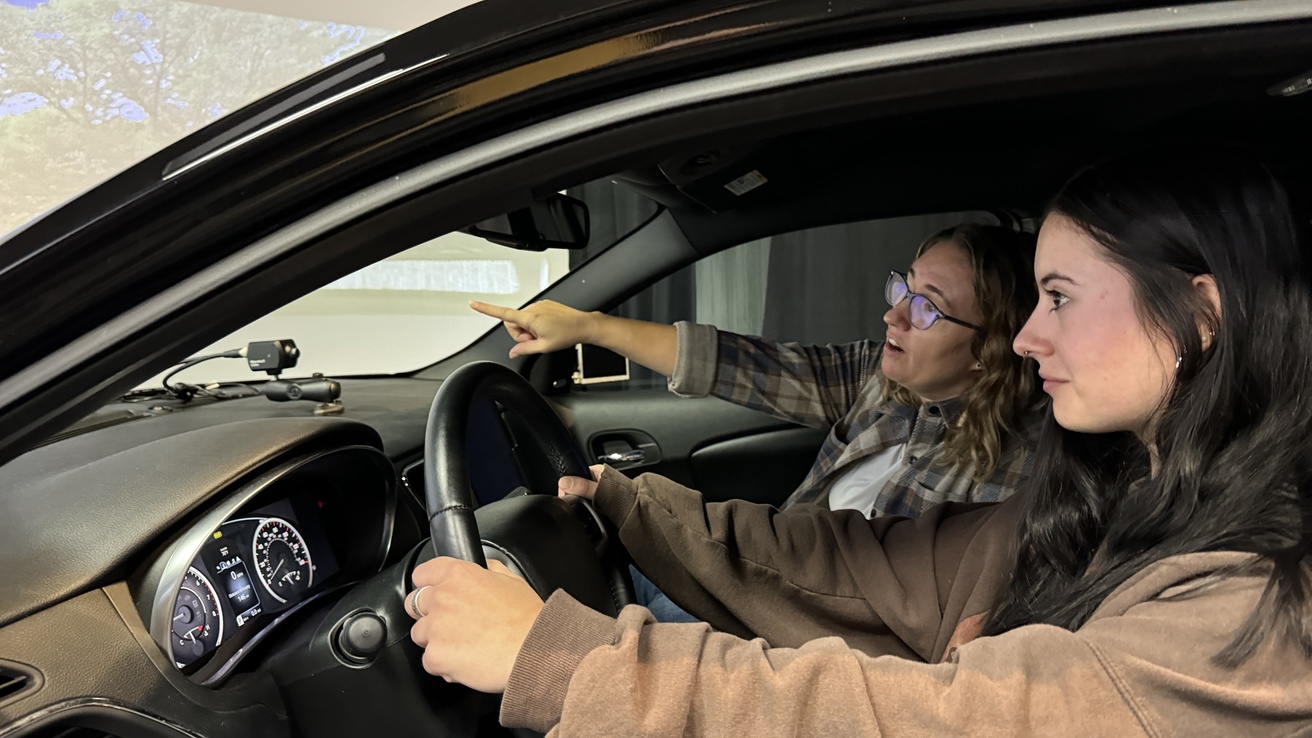placeholder

We are currently recruiting participants! If you are interested, click the button below to fill out our screener:
Improving Novice Teen Driver Roadway Hazard Anticipation Through a Parent-Focused Intervention
Teen drivers are three times more likely to be involved in a fatal crash than adult drivers. As primary supervisors and teachers during the learner phase of licensure, parents are well positioned to teach their children to identify latent hazards in the driving environment. The overall goal of the current project is to improve parental instruction and practice when training teens to drive. In pursuit of this goal, the project consists of three main aims:
- Aim 1: Describe parent-teen conversations about hazard identification and mitigation
- Aim 2: Develop a hazard anticipation training program to teach parents to better instruct their teens about identifying potential hazards on the roadway
- Aim 3: Test the impact of the intervention in a state-of-the-art driving simulator, the NADS-2. This stage of the study is currently underway and we recruiting eligible teen drivers and their parents!
This study is funded by the National Institutes of Health (NIH) Eunice Kennedy Shriver Institute of Child Health and Human Development (NICHD).
placeholder 2
The Role of the Gut Microbiome in Older Adults’ Pedestrian Injury Risk
Due to declining cognitive, perceptual, and motor skills, rates of pedestrian fatality and injury are overrepresented among older adults. Modifiable lifestyle factors, such as exercise and diet, are known to improve cognition among this population. One such lifestyle factor, the gut microbiome (GM), has been linked to risk factors for decision making. This study seeks to establish this relationship through two main aims:
- Aim 1. Identify associations between the gut microbiome and its metabolites and domains of executive functioning known to contribute to safe road-crossing (i.e., working memory, inhibitory control, processing speed, cognitive flexibility) performance in older adults
- Aim 2: Through a virtual reality road crossing task, determine the association between the gut microbiome and its metabolites and risky decision making in road crossing in older adults.
This study is funded by the University of Iowa Injury Prevention Research Center (IPRC) Pilot Grant Program.
placeholder 3
Advanced Eye Tracking of Moving Objects in Driving Simulation
Motor vehicle crashes are a leading cause of death and disability among persons aged 15 – 64. Because crashes are often caused by driver error, crash rates can be improved via interventions that seek to reduce driver error. Understanding where drivers attend and how drivers perceive hazards is a critical step in creating these evidence-based interventions. This study used specialized eye tracking glasses and a driving simulator at the Driving Safety Research Institute (DSRI) to acheive the following aims:
- Aim 1: Develop a generalizable machine learning algorithm to identify objects or areas of interest (AOIs) that change over time in the driving simulation.
- Aim 2: Derive measures of eye gaze using the location of AOIs identified under Aim 1 and previously captured gaze coordinates.
This study was funded by the University of Iowa Injury Prevention Research Center (IPRC) Pilot Grant Program.
placeholder
Parental Scaffolding of Children's Perception-Action Skills
The goal of this project is to advance our understanding of other guided learning in the perception-action domain by studying how individual variation in parent risk tolerance and child effortful control impacts parents’ scaffolding of children’s road crossing skills and children’s learning from these scaffolding experiences. This study is focused on two common road-crossing problems:
- Deciding whether an approaching vehicle intends to yield, and
- Deciding when to cross a stream of continuous traffic.
We first assessed parents' risk tolerance and children's effortful control. We then gathered extensive behavioral data and children and parents individually and jointly cross virtual roads under the two scenarios.
This study is funded by the National Science Foundation.